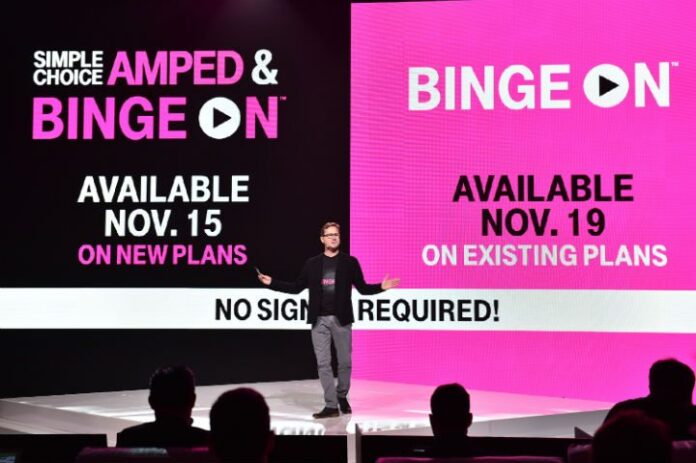Report notes T-Mobile Binge On service accused of interfering with YouTube video traffic
T-Mobile US’ Binge On video offering has reportedly drawn criticism from YouTube, which claims the unlimited streaming service is interfering with YouTube’s video traffic.
According to The Wall Street Journal, YouTube, which like Google is now a division of newly formed Alphabet, said T-Mobile US’ use of video compression technology at the heart of the Binge On service is throttling YouTube videos and impacting quality.
“Reducing data charges can be good for users, but it doesn’t justify throttling all video services, especially without explicit user consent,” a YouTube spokesman told The Wall Street Journal.
The comments come on the heels of the Federal Communications Commission sending a letter to T-Mobile US seeking additional insight into the Binge On service. FCC Chairman Tom Wheeler initially stated he did not think the Binge On service violated current net neutrality or recently instituted Open Internet provisions, indicating the offer was “highly innovative and highly competitive.”
Advocacy group the Internet Association, which counts Google as a member, joined YouTube in questioning the T-Mobile US’ Binge On service, adding its support for the FCC inquiry.
“T-Mobile’s new ‘streaming optimization’ program appears to involve throttling of all video traffic, across all data plans, regardless of network congestion,” the group said in a statement. “The Internet Association applauds the FCC for seeking information on this practice and its potential harm on consumers and online applications and services. … The throttling practice was adopted alongside its Binge On program, which offers consumers and video services the option of removing data charges (‘zero-rating’) for video services. Reducing data charges for entire classes of applications can be legitimate and benefit consumers, so long as clear notice and choice is provided to service providers and consumers. However, a reasonably designed zero-rating program does not include the throttling of traffic for services or consumers that do not participate.”
T-Mobile US acknowledged YouTube was not one of the video streaming services meeting the technology standards of the initial Binge On launch. T-Mobile US management did not seem concerned about network throttling issues when it unveiled the offer, noting the platform was open and free to all content providers as long as they met some technical requirements. Those requirements include a limitation on the quality of the stream to what T-Mobile US claims is “DVD quality” of at least 480p resolution.
The Binge On service, which was unveiled last month, allows for customers on the carrier’s Simple Choice postpaid plans with data buckets of at least 3 gigabytes per month unlimited streaming of video content via their cellular connection from their subscriptions to Crackle, Encore, ESPN, Fox Sports, Fox Sports Go, HBO Now, HBO Go, Hulu, MLB, Movieplex, NBC Sports, Netflix, Sling TV, Sling Box, Showtime, Starz, T-Mobile TV, Univision Deportes, Ustream, Vessel, Vevo and Vudu, as well as the recently launched Go90 service from Verizon Wireless and AT&T’s DirecTV streaming service. That streamed content does not count against a customer’s data bucket and is included at no additional charge.
Customers can control whether they want to limit their video quality to those requirements by controlling the Binge On platform, though they are only able to refrain from dipping into their data allotment if the Binge On platform is enabled on their device.
Customers on data plans of less than 3 GB, which are currently the data buckets included on the carrier’s Simple Choice rate plans, will have data from those streaming services deducted from their data buckets. T-Mobile US claims the Binge On technology provides a three-times improvement in network capacity, noting consumers watching video content not part of the free package will be able to consume three times as much content for the same allotment of data.
Bored? Why not follow me on Twitter

